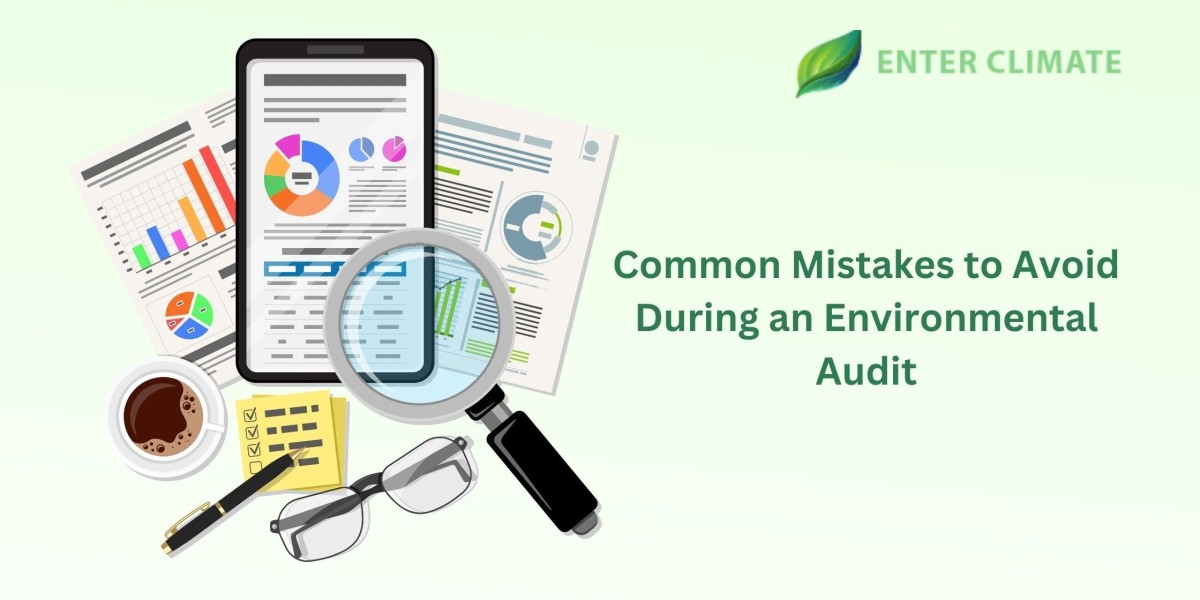Introduction
Environmental audits are an essential part of ensuring that businesses comply with regulations and practice sustainability. In India, as businesses face growing scrutiny from both the government and the public, conducting a thorough environmental audit can help businesses avoid hefty fines and improve their environmental practices. However, many organizations make mistakes during the audit process that can lead to poor results or missed opportunities for improvement. Understanding these common mistakes can help ensure your environmental audit is effective and truly beneficial.
In this blog, we will explore the most common mistakes to avoid during an environmental audit, and provide practical advice on how to conduct one successfully. Whether you are a small business or a large corporation, these tips can help make your audit process smoother and more productive.
1. Not Setting Clear Objectives for the Audit
One of the biggest mistakes businesses make when conducting an environmental audit is failing to set clear objectives. Without a clear understanding of what you want to achieve, the audit can become unfocused and unproductive.
Why this is a mistake:
When the audit process lacks defined goals, businesses often miss out on critical areas that need attention. For instance, if the goal is simply to comply with legal requirements, the audit may not uncover other important sustainability opportunities that could reduce costs or improve efficiency.
How to avoid it:
Before you begin your audit, define what you want to achieve. Are you focusing on compliance with environmental regulations, improving waste management, reducing energy consumption, or something else? Clear objectives will help the team stay focused and ensure the audit delivers the results you need.
2. Ignoring the Scope of the Audit
Another common mistake is failing to properly define the scope of the environmental audit. Businesses sometimes focus on only one area, such as waste management or energy use, while overlooking other aspects that could be critical, like water consumption or carbon emissions.
Why this is a mistake:
By narrowing the scope, businesses might miss important areas of concern, leading to incomplete findings and missed opportunities for improvement. For example, focusing only on waste management while ignoring energy efficiency can result in missing out on potential cost savings and sustainability gains.
How to avoid it:
Make sure the scope of your audit covers all relevant aspects of your business’s environmental impact. Include waste management, energy use, water consumption, emissions, and compliance with environmental laws. A comprehensive audit will give you a more complete picture of where you can improve.
3. Failing to Involve Key Stakeholders
An environmental audit should not be done in isolation. Failing to involve key stakeholders in the process is another common mistake businesses make. Involving employees from different departments, especially those in operations, sustainability, and management, is essential for the audit’s success.
Why this is a mistake:
If stakeholders aren’t engaged, important issues might be overlooked, or the audit might miss practical solutions that employees on the ground level are more aware of. For instance, operations managers may have valuable insights into resource consumption patterns, while sustainability officers can help guide the company’s green goals.
How to avoid it:
Make sure to involve key stakeholders early in the process. Regular communication and input from various departments will ensure that the audit captures all relevant issues and that everyone is on the same page regarding the desired outcomes.
4. Not Updating the Audit Process Regularly
Environmental regulations and best practices are constantly evolving, and so are the ways to manage environmental risks. Businesses that fail to update their audit processes to reflect these changes often miss out on new opportunities for improvement or compliance.
Why this is a mistake:
If you rely on outdated audit methods or checklists, your findings may no longer reflect the latest laws or best practices. Additionally, new technologies and processes might be available that can help reduce environmental impacts but are not identified due to an outdated audit process.
How to avoid it:
Review and update your audit processes regularly to reflect changes in regulations and new industry standards. Using the latest tools, technologies, and data will ensure that your environmental audit services provide the most accurate and up-to-date insights.
5. Overlooking Documentation and Records
Proper documentation is crucial during an environmental audit. Many businesses fail to keep accurate records of their environmental practices or fail to maintain documentation related to previous audits.
Why this is a mistake:
Without proper documentation, it becomes difficult to assess whether changes have been made over time or whether a company is making real progress. Also, inaccurate or incomplete records can result in discrepancies, which may cause confusion during the audit process.
How to avoid it:
Ensure all environmental records, such as energy usage, waste disposal, and emissions data, are properly documented and organized. Having accurate records will make the audit process smoother and help you track improvements over time.
6. Not Providing Proper Training for Audit Teams
An environmental audit requires a skilled and knowledgeable team to ensure accurate assessments. Many businesses overlook the importance of providing training to the audit team, resulting in inefficient audits and missed findings.
Why this is a mistake:
Without proper training, your audit team may not be equipped to identify key environmental risks or opportunities. A poorly trained team might miss regulatory non-compliance issues or fail to spot areas where the business could improve its environmental practices.
How to avoid it:
Invest in training for your audit team to ensure they understand the latest environmental regulations, industry best practices, and the tools needed for the job. Regular training will keep your team up-to-date and ensure the audit process runs smoothly.
7. Lack of Follow-up After the Audit
Conducting the audit is only half the job. Many businesses fail to act on the findings or follow up on the recommended changes. This oversight often means that potential improvements never get implemented.
Why this is a mistake:
Failing to follow up on audit results can lead to a waste of resources and missed opportunities. Additionally, regulatory compliance is an ongoing process, and businesses must take action based on the audit’s recommendations to continue improving and staying compliant.
How to avoid it:
Create an action plan based on the audit results and ensure that the necessary changes are implemented. Regular follow-up checks and monitoring will ensure that the improvements are sustained over time.
Conclusion
Conducting an environmental audit is essential for businesses that want to comply with regulations, reduce costs, and improve sustainability. By avoiding these common mistakes, businesses can ensure that their environmental audit is thorough, effective, and beneficial for both the company and the environment. Remember, an effective audit not only helps with compliance but also drives long-term positive change for your business and the planet.
If you're looking for environmental audit services to help guide your organization, make sure to choose a reliable partner who understands your industry and goals. A well-executed environmental audit can unlock the full potential of your sustainability efforts, saving you money, reducing environmental impact, and boosting your corporate reputation.
FAQs
1. Why is it important to involve all stakeholders in the environmental audit process?
Involving all stakeholders ensures that the audit captures every relevant aspect of the business's environmental impact. Different departments can offer valuable insights that improve the audit’s accuracy and effectiveness.
2. How often should environmental audits be conducted?
Environmental audits should ideally be conducted annually or bi-annually, depending on the size and complexity of the business. However, if your business undergoes significant changes, a more frequent audit may be necessary.
3. Can environmental audits help reduce operational costs?
Yes! An effective environmental audit identifies inefficiencies such as energy wastage, excessive water use, or poor waste management. By addressing these issues, businesses can significantly reduce operational costs.



